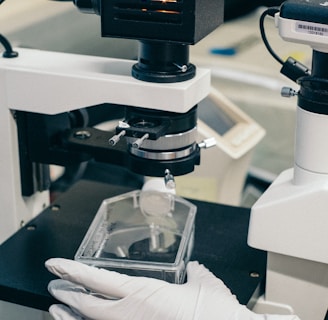Computer-assisted medicine and telemedicine
Manoj Agarwal
12/25/20243 min read


Computer-assisted medicine and telemedicine are two closely related fields that are revolutionizing the way healthcare is delivered. Computer-assisted medicine (CAM) is the use of computers and technology to aid in the diagnosis, treatment, and management of medical conditions. Telemedicine, on the other hand, is the use of telecommunication and information technologies to provide clinical health care services remotely. Together, these technologies are being used to improve access to healthcare, reduce costs, and improve the quality of care.
Computer-assisted medicine includes a wide range of technologies, such as electronic health records, computer-aided diagnosis, and computer-aided surgery. Electronic health records (EHRs) are digital versions of the paper-based medical records that are used to store and manage patient information. They allow for the easy sharing of information between healthcare providers, which can improve the continuity of care and reduce medical errors. Computer-aided diagnosis (CAD) is the use of computers to assist in the diagnosis of medical conditions. It can be used to analyze medical images, such as X-rays and CT scans, and to identify patterns and anomalies that may indicate a medical condition. Computer-aided surgery (CAS) is the use of computers to assist in the planning and execution of surgical procedures. It can be used to create 3D models of the patient's anatomy and to provide real-time guidance during the surgery.
Telemedicine includes a wide range of technologies, such as video conferencing, remote monitoring, and telehealth. Video conferencing is the use of videoconferencing technology to provide remote consultations between healthcare providers and patients. This can be used to provide access to specialists and to reduce the need for patients to travel long distances for care. Remote monitoring is the use of technology to monitor patients remotely, typically outside of a traditional healthcare setting. This includes the use of wearable devices, such as fitness trackers, and other sensors to collect data on patients' health status, and transmit that data to healthcare providers for analysis. Telehealth is the broader term that encompasses all forms of remote healthcare, including telemedicine, remote monitoring, and other forms of technology-enabled healthcare services.
One of the most significant benefits of computer-assisted medicine and telemedicine is the ability to improve access to healthcare, particularly for rural and remote areas, and for individuals with mobility issues. These technologies allow patients to receive care from healthcare providers remotely, without needing to travel long distances. This can save patients time and money, and can also reduce the burden on the healthcare system by reducing the need for hospital visits.
Another benefit of computer-assisted medicine and telemedicine is the ability to reduce costs. These technologies can help to reduce the need for expensive procedures, such as surgeries and hospital visits, and can also help to improve the efficiency of the healthcare system. Additionally, telemedicine can reduce the need for expensive medical equipment, such as CT scanners and X-ray machines, by allowing healthcare providers to share these resources remotely.
Computer-assisted medicine and telemedicine can also help to improve the quality of care. These technologies can provide healthcare providers with access to more information and data, which can help to improve the accuracy of diagnoses and treatment decisions. Additionally, telemedicine can help to improve the continuity of care by allowing patients to receive care from multiple healthcare providers remotely.
However, there are also challenges that need to be addressed in the future of computer-assisted medicine and telemedicine. One of the biggest challenges is the need for more high-quality data. While there is a growing amount of data available, much of it is of low quality, and may not provide the insights and knowledge needed for accurate diagnoses and treatment decisions. Additionally, there is also a need for more research and development to improve the quality and capabilities of computer-assisted medicine and telemedicine technologies, as well as to better understand the impact of these technologies on patients and healthcare providers.
Another challenge is the need for more secure and reliable communication and data storage systems. As more sensitive patient information is being shared and stored electronically, it's crucial to ensure that this information is protected from unauthorized access, hacking and breaches of privacy.
Moreover, there is a need for more education and training for healthcare providers to effectively use computer-assisted medicine and telemedicine technologies. This includes training on how to use electronic health records and other computer systems, as well as on how to communicate effectively with patients via telemedicine technologies.
Another challenge is the need for more standardized policies and regulations for computer-assisted medicine and telemedicine. These technologies are still relatively new, and there is a lack of consistency in how they are used and regulated across different states and countries. This can make it difficult for healthcare providers and patients to navigate the system and can also limit the widespread adoption of these technologies.
